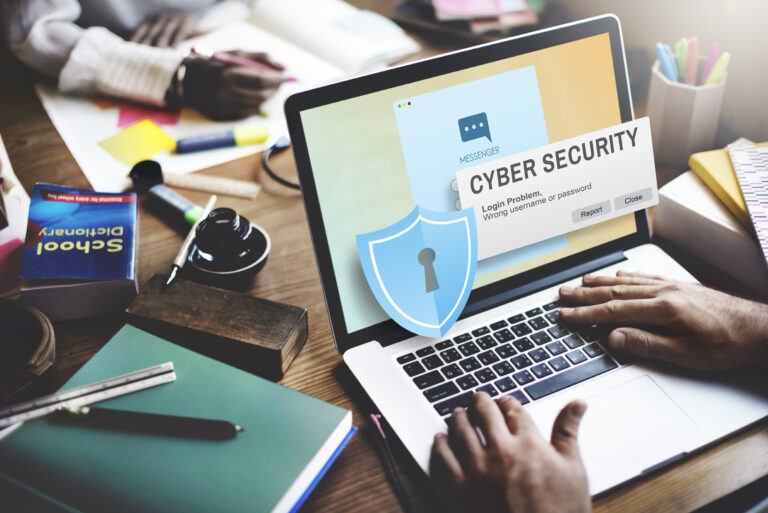5 Ways to Prevent and Stop Cyberbullying!

Why Cyberbullying Prevention Matters
‘Bullying’ is a loaded word that brings up a range of emotions among adults and children, and unfortunately cyberbullying is a newer dimension of bullying that today’s youth face. In fact, more than one in three teens report being victims of cyberbullying, yet less than half of teachers report feeling equipped to address cyberbullying in their classrooms. The good news is that, with appropriate instruction and prevention efforts, schools can make a major impact. It’s been proven that schools with anti-cyberbullying programs experience at least a 20% reduction in incidents.
Educators and schools are expected to fulfill many responsibilities in children’s lives, and today, that includes preparing students with necessary skills to help them successfully and safely navigate an increasingly digital world.
What Is Cyberbullying and What Are Schools Responsible For?
According to StopBullying.gov, ‘cyberbullying’ is bullying that takes place over digital devices like phones, computers, and tablets. With the rise of social media and other technologies, cyberbullying can occur via text, social media apps, messaging apps, email, online forums like Reddit, and online gaming communities where users can view, participate in, or share content. Cyberbullying includes sending, posting, or sharing negative, harmful, false, embarrassing, or mean content about someone else and, depending on severity, can cross the line into unlawful or criminal behavior.
Most public school districts are legally required to include cyberbullying in their official policies, which should:
- prohibit cyberbullying,
- prohibit retaliation against anyone who reports bullying incidents,
- solidify steps students can take to get help and intervention in response to cyberbullying,
- supply available counseling for victims, perpetrators, and witnesses,
- create a procedure for alerting parents and guardians about incidents,
- create a way for students to anonymously report cyberbullying,
- establish procedures for investigating bullying incidents,
- and ensure that discipline for bullying a student with disabilities complies with federal law, including IDEA (the Individual with Disabilities Education Act)
This is a tall order, particularly when considering the mountain of responsibilities schools and educators have already – operations management, curriculum development, professional training, managing in-classroom behavior, community partnerships, family engagement instructional initiatives, creating a strong culture in schools and classrooms, and the list goes on and on. However, with the right materials, lesson plans, and activities, any educator can feel equipped to prevent and address cyberbullying.
5 Tips for Cyberbullying Prevention Education
Today’s schools and educators are not only charged with ensuring safe environments for kids in-person in the classroom, but are often expected to address bullying issues that arise online outside of school hours. Get in front of cyberbullying and nurture a sense of belonging with your students using proven Digital Citizenship lessons and materials.
- The topic of bullying and cyberbullying can be emotional and when our brains are flooded by emotion, it’s difficult to activate reason. Engage students in reflective discussions to help them understand cyberbullying from multiple perspectives. Start with the questions below, ask students to share in pairs or small groups, and then bring the conversation to the whole group to debrief.
- What does cyberbullying mean? Have you ever seen or experienced it? (Cyberbullying means bullying in digital environments, such as social media, messages, or games.)
- How does cyberbullying differ from traditional bullying? (Cyberbullying can occur anytime and anywhere, spreads quickly, and can remain permanently online.)
- What kind of feelings can cyberbullying cause in the victim? (Cyberbullying can cause sadness, fear, anxiety, and loneliness.)
- What can we do if we see bullying online? (We can inform an adult, support the victim, and report the bullying to the service provider.)
- How can we prevent bullying and promote kindness online? (We can treat others kindly, think before sharing something, and intervene if we see bullying.)
- Introduce this framework from the Taito Learning Digital Citizenship Curriculum to support you in covering a difficult topic with your students. Review the three steps for an ideal response to cyberbullying:
- Step away. Leave the conversation, game, or call. Breathe. If needed, gather evidence like screenshots to help you in the future.
- Seek help. Tell a trusted adult what happened and work together to come up with a plan to address the cyberbullying incident.
- Speak. When ready, talk to the bully with the support of an adult and ask them to stop the hurtful behavior.
- Discuss the importance of the second step above with students. Share that over half of younger children aged 8-12, who saw or experienced something that bothered them online, told a trusted adult but almost 1 in 3 chose to keep it to themselves. Ask students to discuss, “Why do you think it’s important to seek help from a trusted adult when bullying or cyberbullying happens?”
- Have students practice resolving potential conflict situations that may arise in digital communication. Step in to model as needed. Role play scenarios that model the three cyberbullying response steps above. Practicing responses builds students’ confidence and equips them with tools to handle real-life situations. Try these scenarios from the Taito Learning Digital Citizenship Curriculum to get started.
- Co-create “Class Internet Rules.” Ask students to collaborate and consider what rules and guidelines are needed for online behavior to ensure everyone’s safety and to interact with each other kindly. Post their top 3 rules prominently in the classroom.
With strategies and activities like the ones found in the Taito Learning Digital Citizenship curriculum, educators help prevent cyberbullying and equip students with the skills needed to respond effectively in cyberbullying incidents. This will help students understand the importance of broader skills like advocating for themselves, honest communication, empathy, and perspective taking.
Cyberbullying Warning Signs
Cyberbullying is particularly hard to monitor since it takes place online. However, there are warning signs that educators, parents, and other trusted adults should be aware of that might indicate a child is either being cyberbullied or is cyberbullying someone else. Watch for these common warning signs:
- Noticeable and significant increases or decreases in device use, including texting
- A child having extreme emotional responses (laughter, anger, upset) to what is happening on their device
- A child hiding their screen or device when others are near, and avoiding telling others what they are doing on their devices
- Social media accounts are suddenly shut down or new ones appear
- A child starting to avoid social situations, even those they typically enjoy
- A child withdrawing or becoming depressed, losing interest in people and activities
When trusted adults are aware of these warning signs, they can intervene more quickly and get students the help they need before incidents escalate.
Stop Cyberbullying with Taito Learning Digital Citizenship Education
Preventing cyberbullying doesn’t have to be overwhelming. With expert-created resources like the Taito Learning Digital Citizenship curriculum, educators become equipped to foster safer online spaces and build critical digital skills among students. This curriculum includes ready-to-use lessons, practical strategies, and interactive activities that empower students to recognize, prevent, and respond effectively to cyberbullying.
Start a 60-day free pilot of the Digital Citizenship Curriculum, including Typetastic, our K-5 keyboarding program, and experience how Taito Learning can support your efforts in creating a more respectful and responsible digital culture in your school. Together, we can help students navigate the online world with confidence and empathy.


